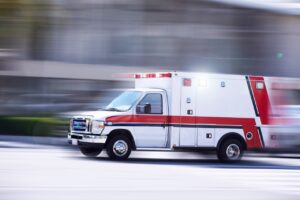On this page
If you are experiencing a health-care emergency, go to the nearest emergency department or call 911 for an ambulance. For health advice, call the NL Health Line at 811.
The emergency department in a hospital or health centre receives and cares for people who are sick or injured, whether they arrive on their own or by ambulance.
What to do in an emergency
If you are experiencing an emergency, go to the nearest emergency department or call 911 for an ambulance.
If you are experiencing a mental health crisis, call 811.
What are some serious or urgent medical problems?
Go to your nearest emergency department if you’re facing a serious or urgent medical issue(s) including:
- Chest pain
- Breathing problems
- Stroke or stroke-like symptoms
- Weakness or dizziness that does not get better
- Sudden loss of vision
- Sudden confusion
- Unusual severe headache
- Fever in children less than three (3) months old
- Frequent vomiting and diarrhea and/or severe stomach pain
- Head injury (especially if person lost consciousness, fainted or became confused)
- Injury to the neck or spine (especially with loss of feeling or motion in a part of the body). Do not move a person with this problem unless it is life and death.
- Sexual assault
- Large cut or wound
- Injury to a joint or limb with loss of use, swelling and severe pain
- Serious burns, inhalation of smoke or other poisonous fumes
- Severe allergic reactions
- High fever that cannot be controlled
- Any fever resulting from receiving cancer medications
- Sudden high fever with neck stiffness and headache
- Poisoning or drug/alcohol overdose
- Suicidal thoughts
If you are unsure whether you, or someone else, should go to an emergency department, call 811 to speak with a registered nurse 24 hours, seven days a week.
Wait times
Wait times at the emergency department vary for many reasons. While we work hard to keep wait times short, delays can happen, especially during busy times or when emergencies, like accidents, bring in many patients at once. Learn more about wait times.
NL Health Services uses the Canadian Triage and Acuity Scale (CTAS) to prioritize patient care based on the severity of a patient’s condition or illness. Learn more about how patients are triaged in the emergency department.
The order in which patients are seen is based on medical need. Not all illnesses and injuries are equally urgent and not always visible.
Patients with severe illness or injury will be treated first to ensure their condition does not worsen.
Everyone is important to us and will be seen as soon as possible. During peak times, however, wait times may be longer.
Civility and respect
Let’s work together to create positive interactions and experiences of care.
We understand that visiting the emergency department can be stressful. Our teams are dedicated to treating you with respect and civility. We ask that you are respectful to our staff and physicians.
What to expect when you arrive
Step 1 – Before you go:
Bring the following documents, if possible, to avoid delays:
- Your Newfoundland and Labrador Medical Care Plan (MCP) card, or other provincial health-care card.
- An up-to-date list of your medications or the medication bottles (whether prescribed by your doctor or over the counter, including vitamins that you take regularly).
- Any related health records.
- Personal medical equipment that you may need while you are in the emergency department.
We encourage you to bring one person to support and assist you if needed. They may be asked to wait in the waiting room for short periods.
Step 2 – Once you arrive:
The process may vary slightly depending on the emergency department. You will be either be triaged by a registered nurse and then registered or registered first and then triaged.
Depending on your triage level, and what else is happening in the emergency department, you may be taken immediately to a treatment room or asked to wait in the waiting room.
We offer a number of virtual ER care services to improve patient access and quality care. Depending on your situation, you may interact with different virtual care services. To learn more, visit Virtual Care Program.
Step 3 – Waiting for treatment:
You may need to wait when you visit the emergency department. If your condition worsens or you have questions, inform a nurse immediately.
The order of priority for treatment in the emergency department goes to the most seriously ill or injured. The order of priority can change depending on incoming arrivals or a change in the condition of someone already in the emergency department.
Wait times are also affected by the number of patients in the emergency department.
Step 4 – Receiving medical care:
When you are brought into a treatment area, your condition will be more thoroughly assessed.
The doctor or nurse practitioner will discuss treatment options and make follow-up arrangements or referrals. You may be referred to a specialist to determine if you need to be admitted to the hospital.
Leaving the emergency department without being seen
If you plan to leave without being seen, please let the nurse know. If you leave before being seen by a physician or nurse practitioner, you may receive a follow-up call within 24 hours. If you cannot be reached, we will call your identified family contact.
Our team
Our team of health-care professionals may include:
- Emergency room physicians
- Nurse practitioners
- Emergency room nurses
- Social workers
- Respiratory therapists
- Non-invasive cardiology staff (i.e. EKG technicians)
- Advanced care paramedics
- Environmental services staff
- Clerical staff and support staff
- Security personnel

